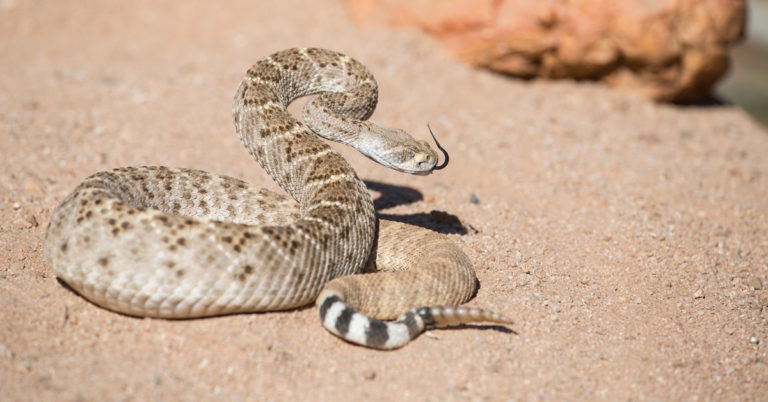So you’ve been bitten by a venomous snake? Here’s what to do.

 Don’t apply a tourniquet. Don’t suck out the venom. And never, ever attempt to capture or kill the snake.
Don’t apply a tourniquet. Don’t suck out the venom. And never, ever attempt to capture or kill the snake.
When traveling in areas where you might encounter a venomous snake, knowing what to do is just as important as knowing what not to do.
So in recognition of World Snake Day on July 16, the time is right to go over some important advice that could save your life or the life of your Scouts.
It starts, of course, with being prepared. And you do that by adding the free SnakeBite911 app to your first aid kit. As someone who spends a lot of time outdoors, I’ve given the app a permanent spot in my phone’s “Scouting” folder.
Now I don’t want to alarm you, but it’s estimated that 8,000 venomous snakebites occur each year in the United States — usually during the months of March to October. Snakes live in nearly all states — not just deserts and swamps but also rainforests and urban areas. Even a bite from a nonvenomous snake, though rarely fatal, requires immediate medical attention.
What not to do
Actions you might see on TV (I’m looking at you, Discovery Channel) or think are beneficial may actually put the victim at greater risk of infection or loss of limb after a snakebite.
- DO NOT use tourniquets.
- DO NOT attempt to cut or apply suction to the bite site.
- DO NOT apply cold packs or ice to the skin.
- DO NOT use Advil, Motrin or other non-steroidal anti-inflammatory drugs.
- DO NOT use shock treatments or apply electricity to the bite.
- DO NOT attempt to capture or kill the snake.
- DO NOT attempt to transport the snake.
What to do
Follow these two steps if bitten:
- Remain calm and seek immediate medical attention.
- Consult the app.
SnakeBite911, the app
Two things most people don’t have when bitten by a snake: time or knowledge about snakebites.
“There is a startling lack of public knowledge with respect to venomous snakebites and how to treat them, even among individuals who are outdoorsy,” says Tom Logan, head of patient outcome management for the company that makes SnakeBite911, a free app. “In the rare occurrence of a snakebite, time really is tissue, and quick and appropriate care is absolutely paramount for the victim.”
So here’s where the iOS app SnakeBite911 comes in. The app includes:
- Information to help you identify snakes, including North American pit vipers, rattlesnakes, copperheads and cottonmouths (water moccasins).
- A snake sightings map to view and share snake sightings in your area.
- A hospital locator tool to find the nearest hospital equipped to treat venomous snakebites.
- Tips for navigating snake-inhabited terrain
- Ideas on how to provide basic first aid in the event of a bite
- Dos and don’ts in a snakebite emergency
- A time-stamped venom tracker, which uses your iPhone or iPad’s built-in camera to capture photos of the bite area at regular intervals. This can help doctors and first responders.
Here’s a demo of the app:
Which snakes are native to your area?
Use the interactive map at this site.
